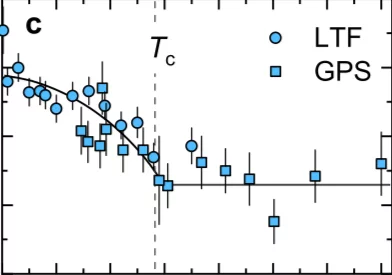Non-centrosymmetric superconductors (NCSCs) are promising candidates in the search for unconventional and topological superconductivity. The α-Mn-type rhenium-based alloys represent excellent examples of NCSCs, where spontaneous magneticfields, peculiar to time-reversal symmetry (TRS) breaking, have been shown to develop in the superconducting phase. By converse, TRS is preserved in many other isostructural NCSCs, thus leaving the key question about its origin fully open. Here, we consider the superconducting Re1−xMox (0 ≤ x ≤ 1) family, which comprises both centro- and non-centrosymmetric structures and includes also two extra superconducting phases, β-CrFe and bcc-W.
Muon-spin relaxation and rotation (μSR) measurements show a gradual increase of the relaxation rate below Tc, yet its independence of the crystal structure, suggesting that rhenium presence and its amount are among the key factors for the appearance and the extent of TRS breaking in the α-Mn-type NCSCs. The reported results propose Re1−xMox as an ideal test case for investigating TRS breaking in unconventional superconductors.
Facility: SμS, SLS
Reference: T. Shang et al, npj Quantum Materials 76 (2020)
Read full article: here



